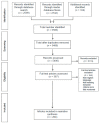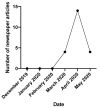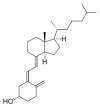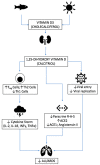Could Vitamins Help in the Fight Against COVID-19?
- PMID: 32842513
- PMCID: PMC7551685
- DOI: 10.3390/nu12092550
Could Vitamins Help in the Fight Against COVID-19?
Abstract
There are limited proven therapeutic options for the prevention and treatment of COVID-19. The role of vitamin and mineral supplementation or "immunonutrition" has previously been explored in a number of clinical trials in intensive care settings, and there are several hypotheses to support their routine use. The aim of this narrative review was to investigate whether vitamin supplementation is beneficial in COVID-19. A systematic search strategy with a narrative literature summary was designed, using the Medline, EMBASE, Cochrane Trials Register, WHO International Clinical Trial Registry, and Nexis media databases. The immune-mediating, antioxidant and antimicrobial roles of vitamins A to E were explored and their potential role in the fight against COVID-19 was evaluated. The major topics extracted for narrative synthesis were physiological and immunological roles of each vitamin, their role in respiratory infections, acute respiratory distress syndrome (ARDS), and COVID-19. Vitamins A to E highlighted potentially beneficial roles in the fight against COVID-19 via antioxidant effects, immunomodulation, enhancing natural barriers, and local paracrine signaling. Level 1 and 2 evidence supports the use of thiamine, vitamin C, and vitamin D in COVID-like respiratory diseases, ARDS, and sepsis. Although there are currently no published clinical trials due to the novelty of SARS-CoV-2 infection, there is pathophysiologic rationale for exploring the use of vitamins in this global pandemic, supported by early anecdotal reports from international groups. The final outcomes of ongoing trials of vitamin supplementation are awaited with interest.
Keywords: COVID-19; SARS-CoV-2; immunonutrition; supplementation; vitamin.
Conflict of interest statement
The authors declare no conflict of interest.
Figures










References
-
- World Health Organisation Coronavirus Disease (COVID-19) Pandemic. [(accessed on 21 August 2020)]; Available online: https://www.who.int/emergencies/diseases/novel-coronavirus-2019.
-
- Zhou F., Yu T., Du R., Fan G., Liu Y., Liu Z., Xiang J., Wang Y., Song B., Gu X., et al. Clinical course and risk factors for mortality of adult inpatients with COVID-19 in Wuhan, China: A retrospective cohort study. Lancet. 2020;395:1054–1062. doi: 10.1016/S0140-6736(20)30566-3. - DOI - PMC - PubMed
Publication types
MeSH terms
Substances
Grants and funding
LinkOut - more resources
Full Text Sources
Other Literature Sources
Medical
Miscellaneous

